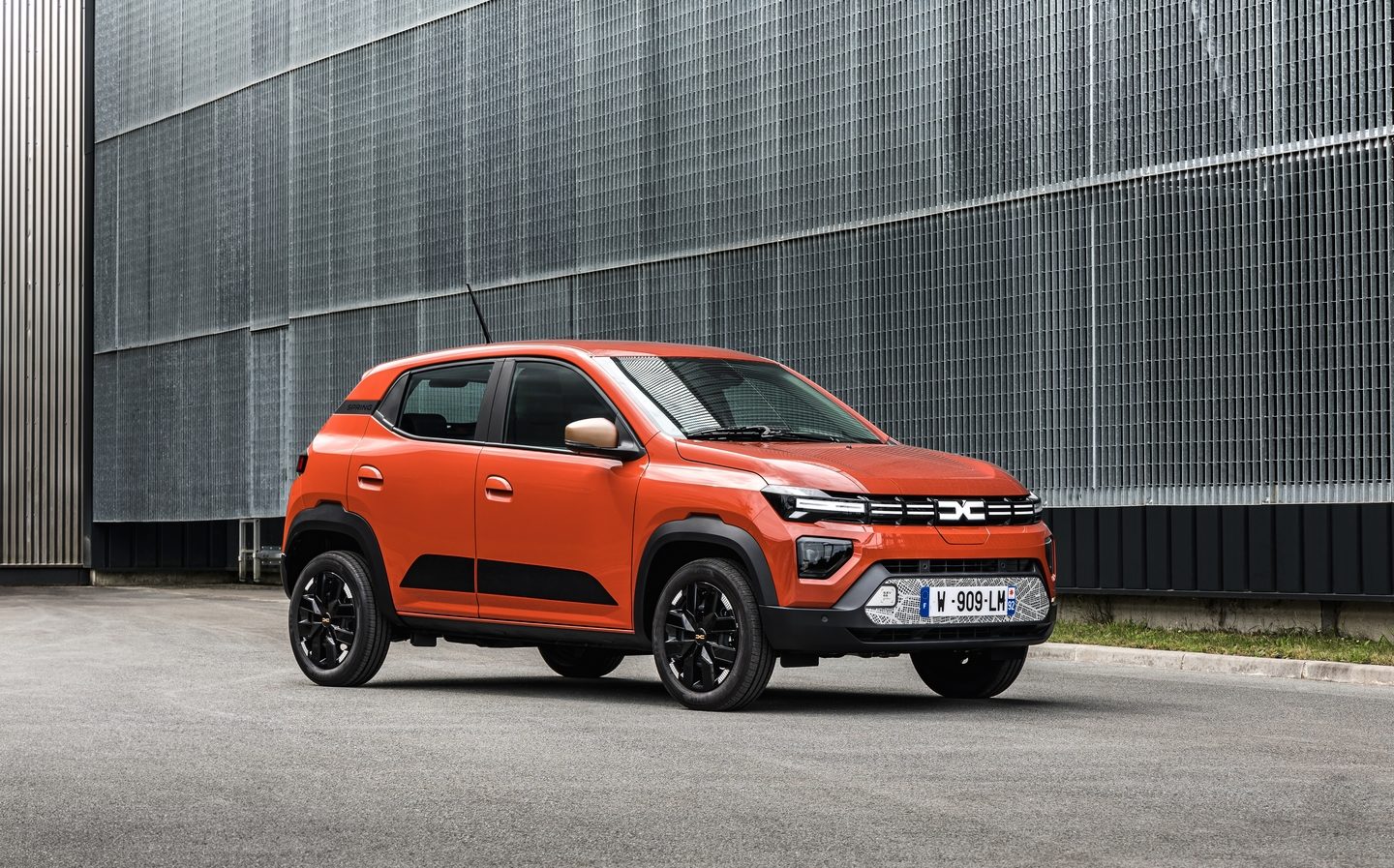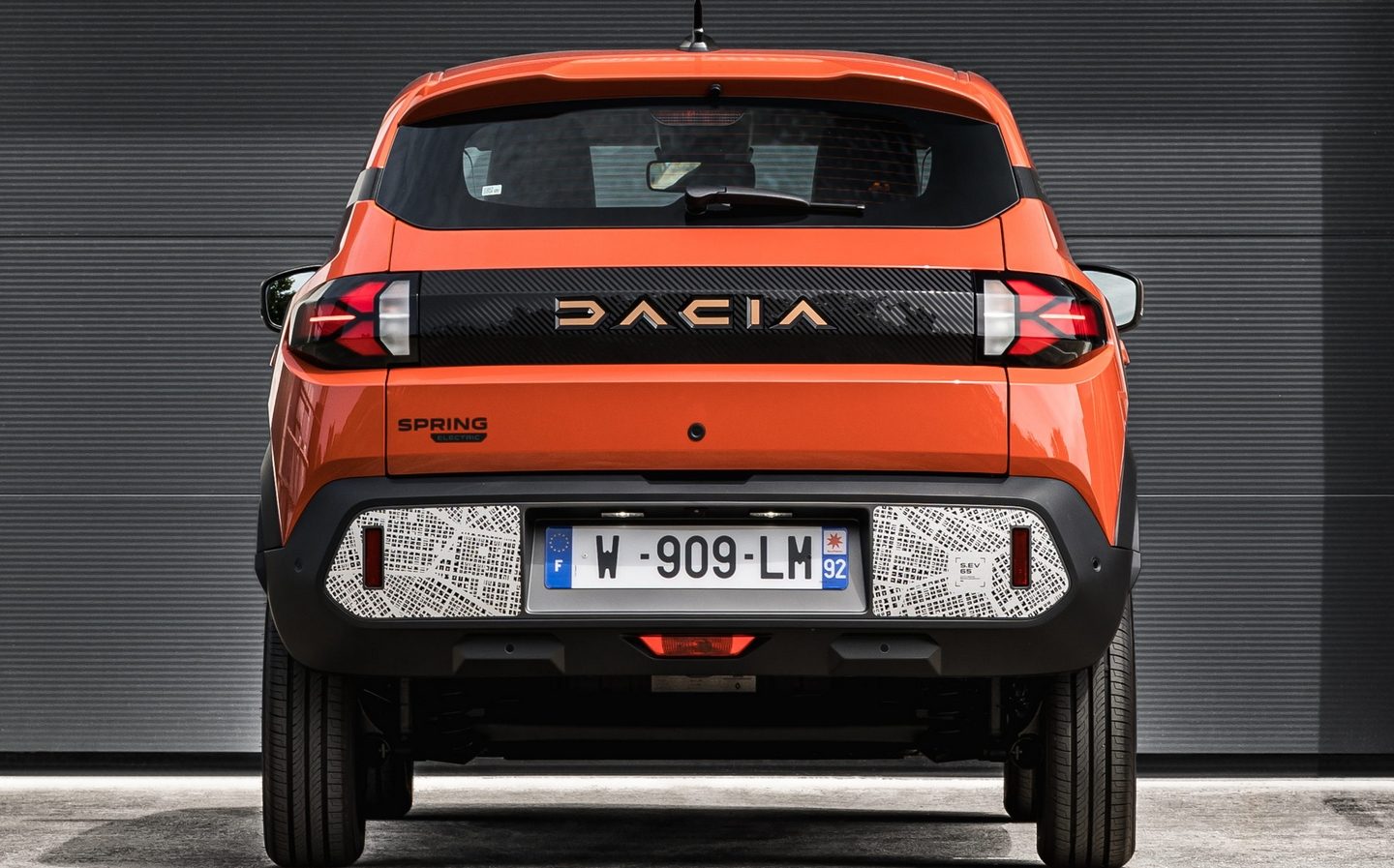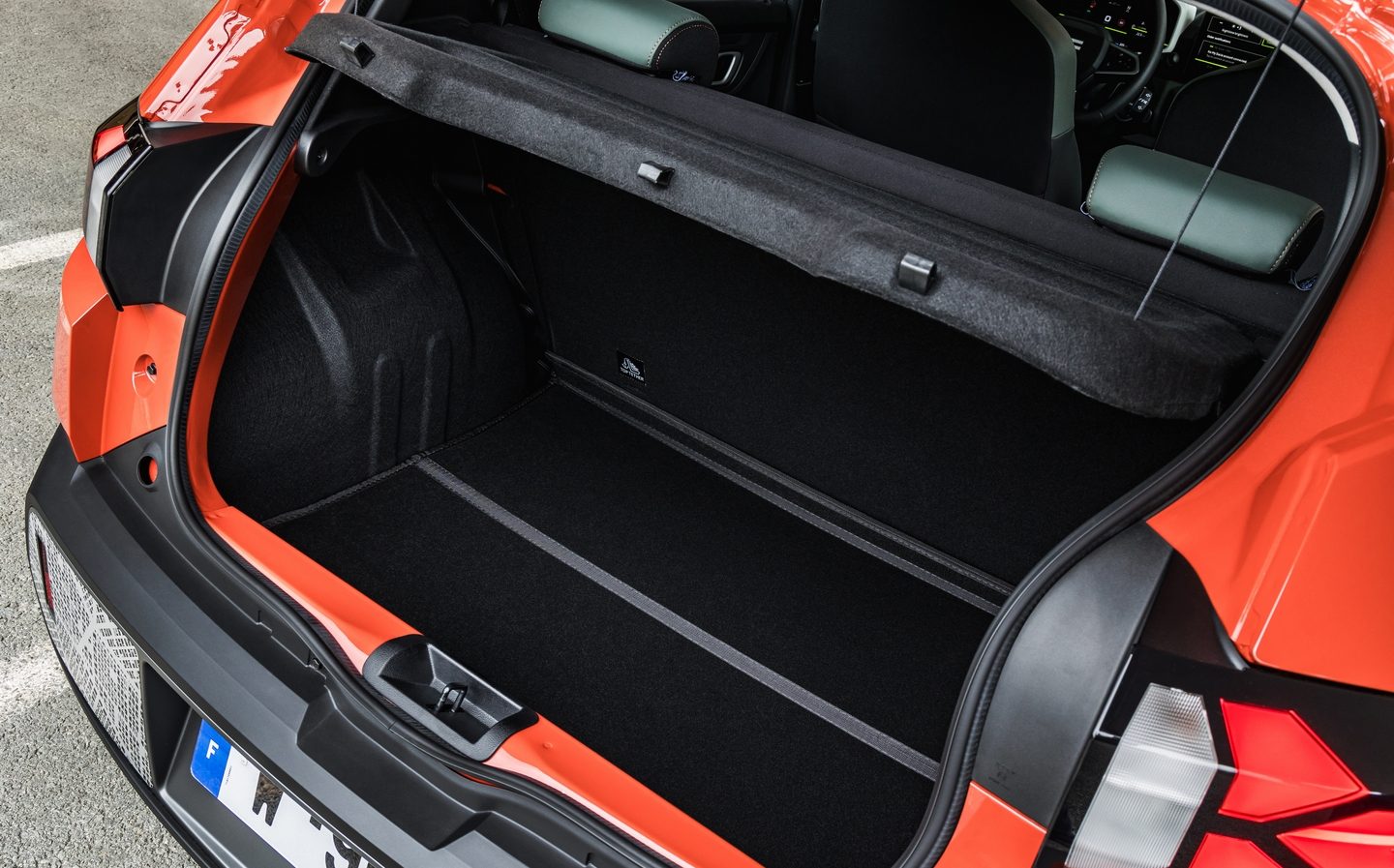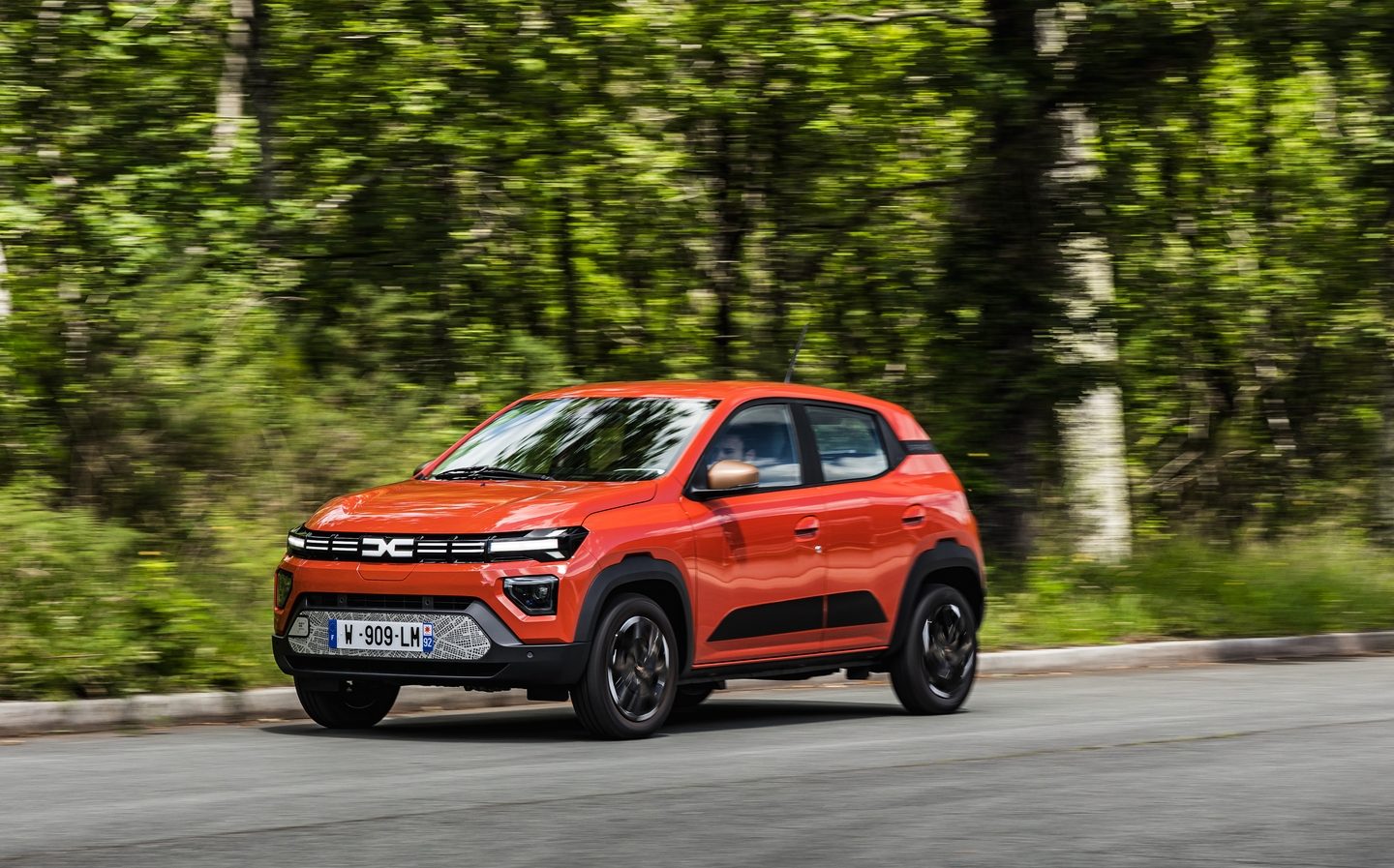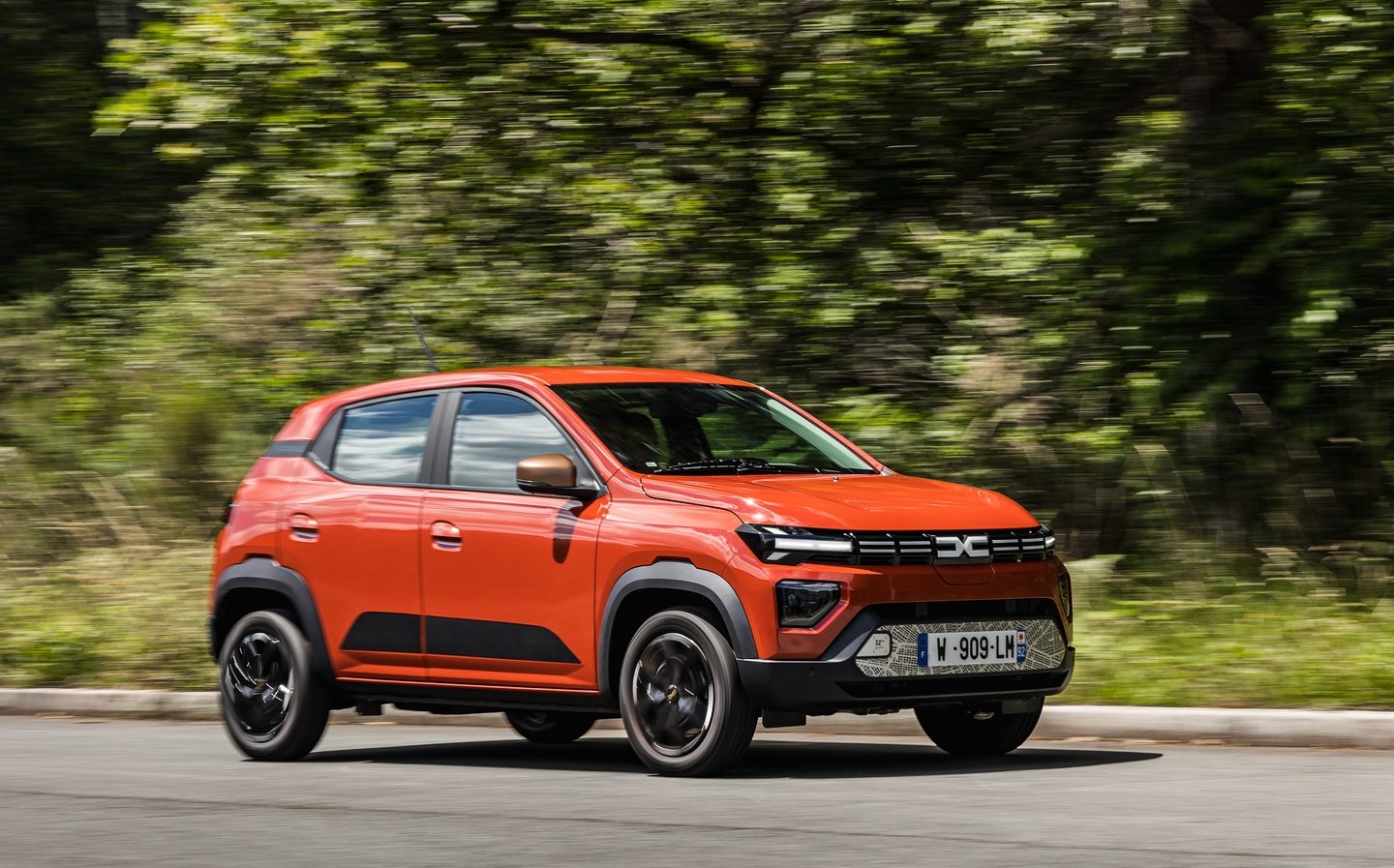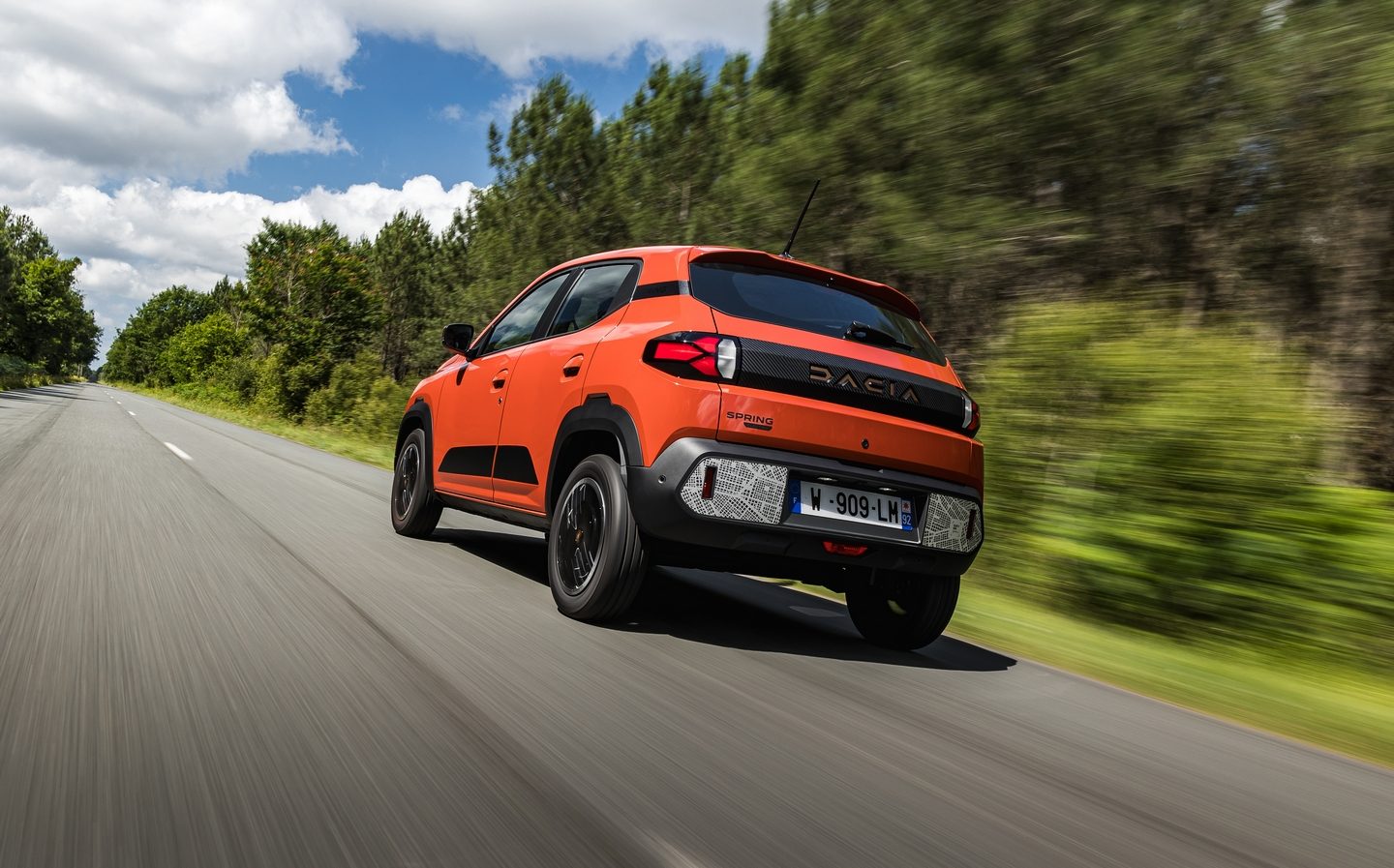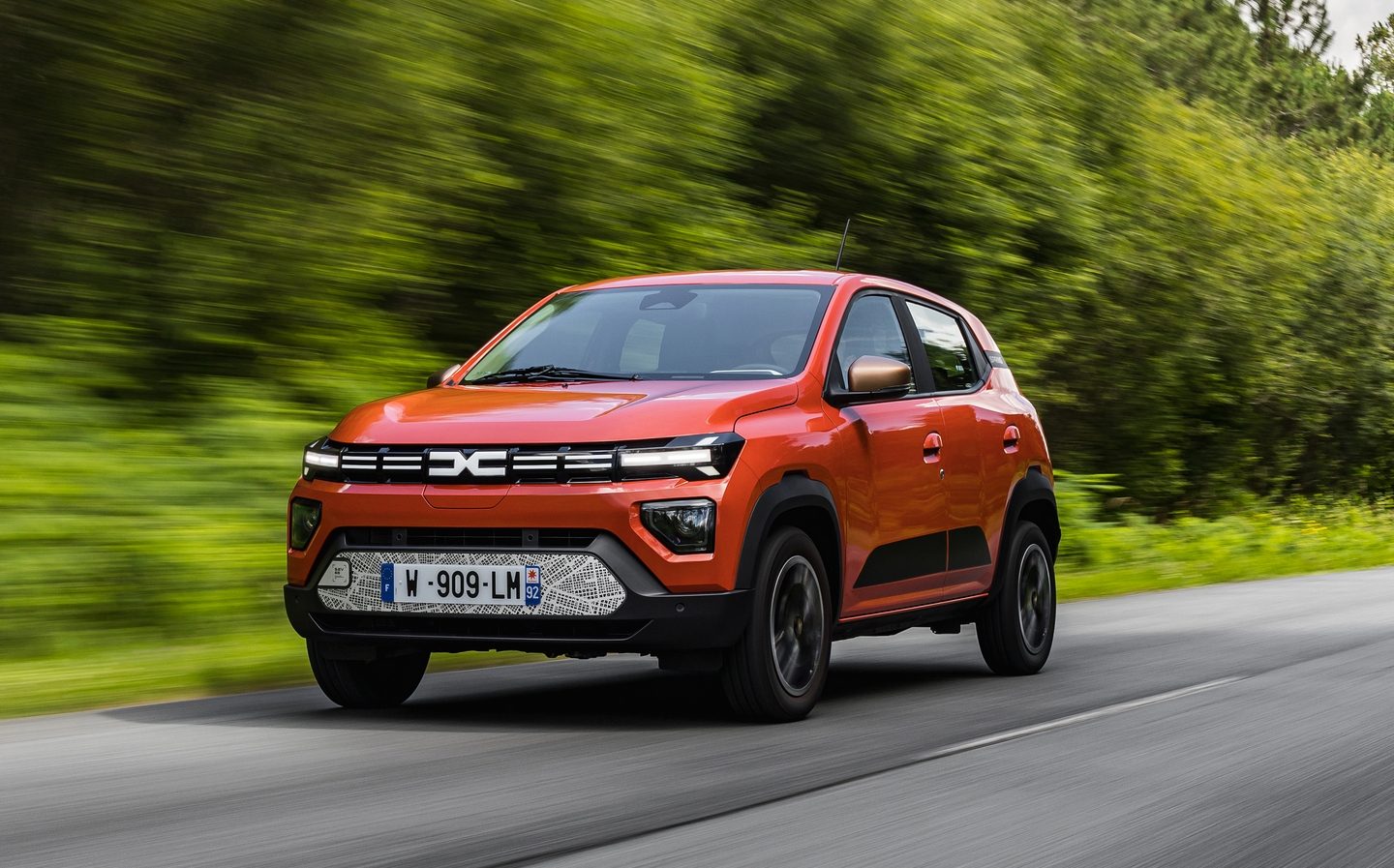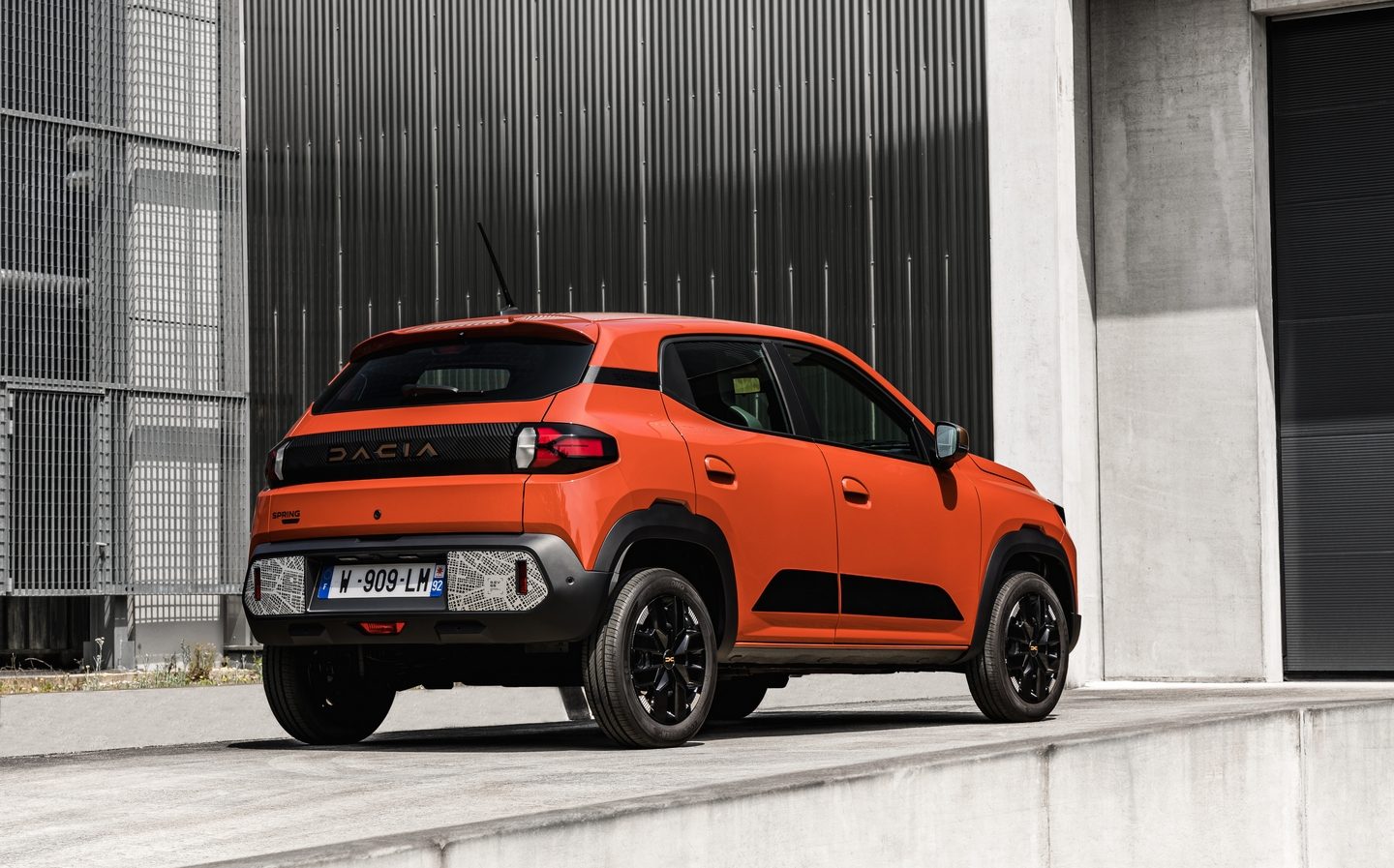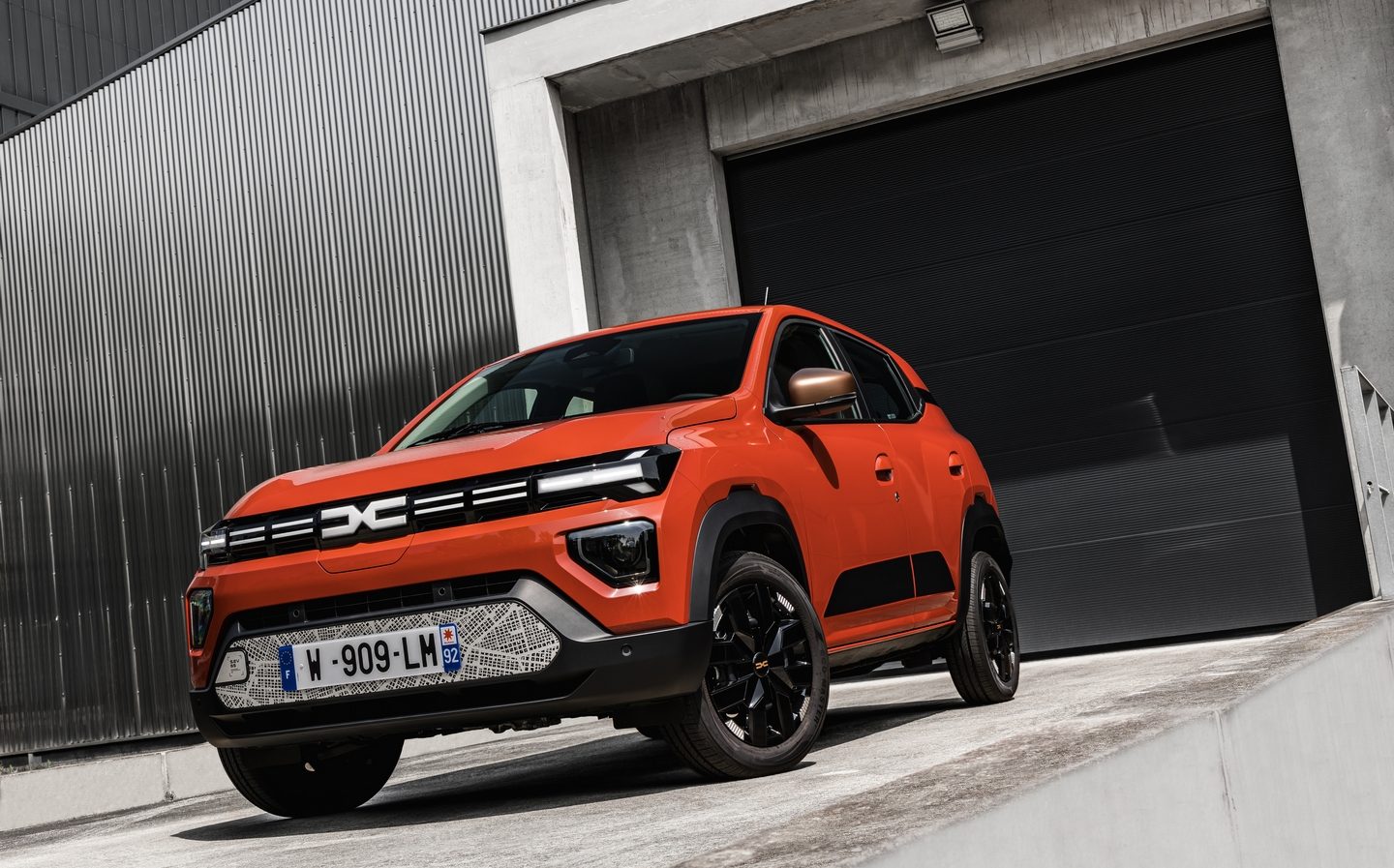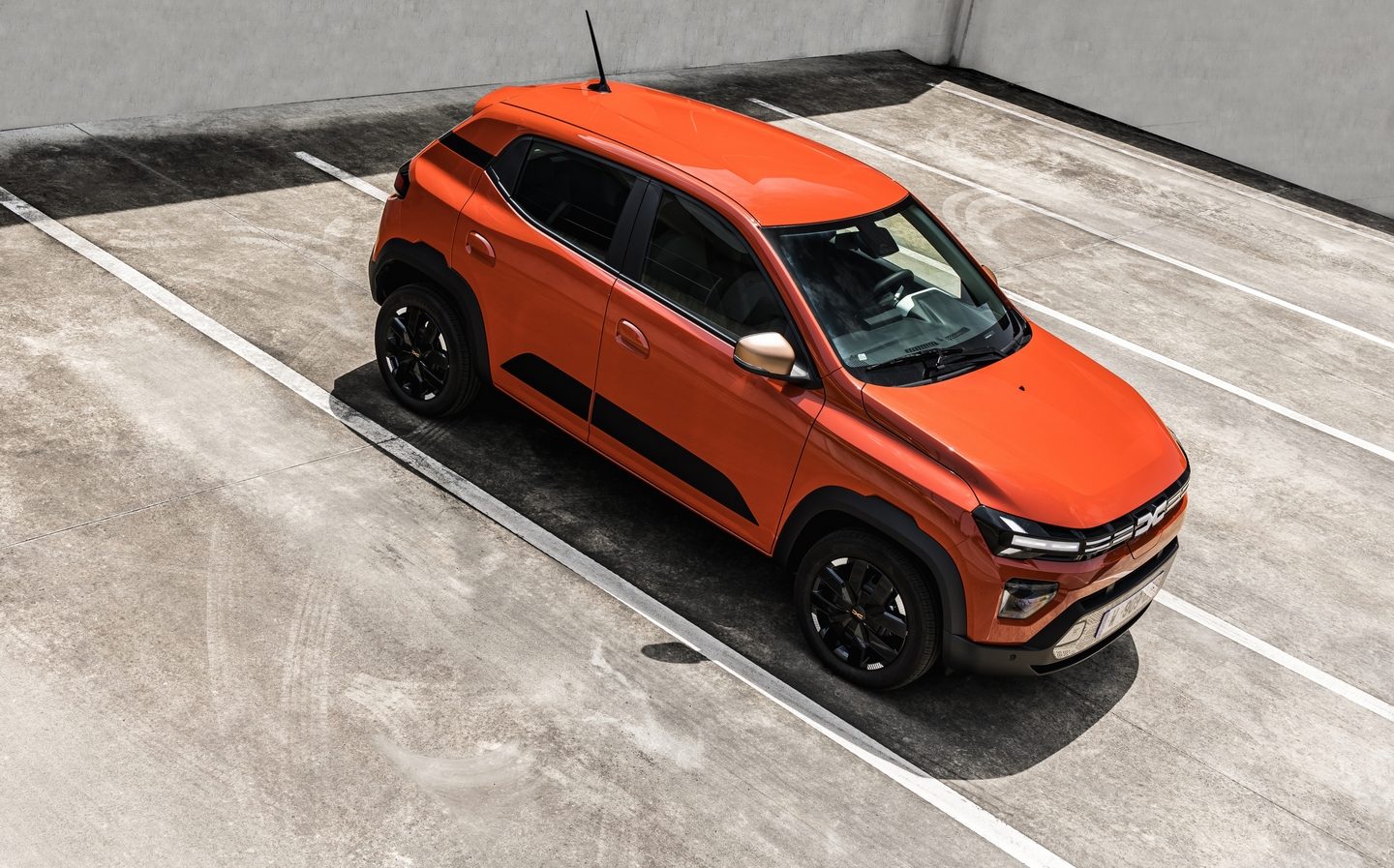Dacia Spring 2024 review: At under £15k it's the cheapest new EV on sale … but that's not the only reason to buy it
Springtime for cheap cars that are EV
The best and quickest way I can describe the new Dacia Spring to you is to say that it is started with a key. Think about this for a moment. In every other electric car of the modern era, the starting up is done by pushing a button, or in some merely by activating pressure pads in the seat when you climb in.
In the Spring, you take a physical prong of metal out of your pocket, insert it into a slot behind the steering wheel and turn it one quarter rotation away from you. What an idea, eh? Cheap, simple, proven technology. This is the core of the Dacia Spring’s character — frill-free motoring.
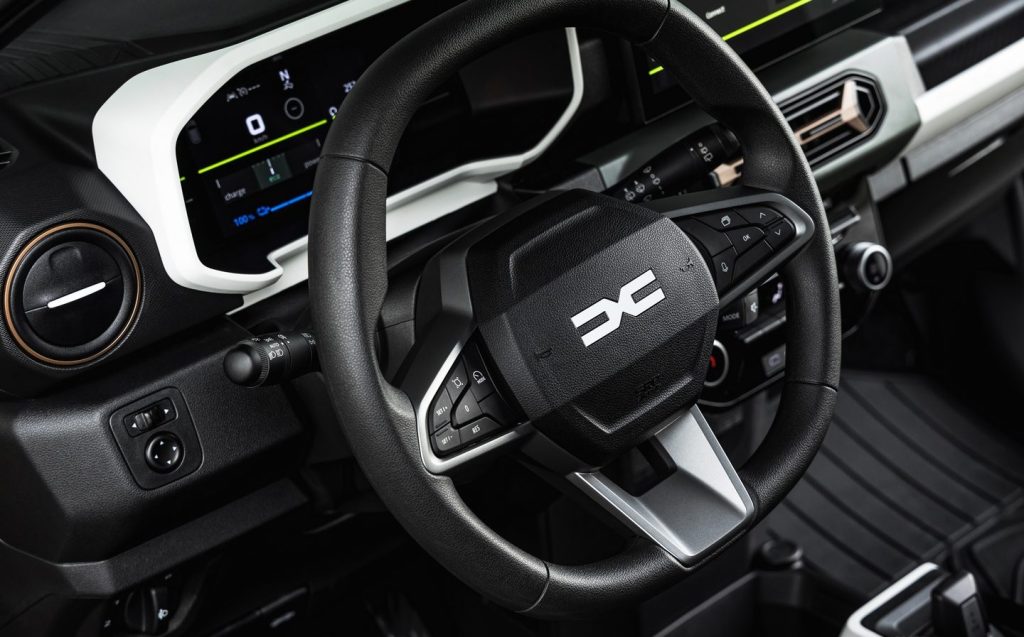
Over recent months there have been few motoring headlines about electric vehicles that haven’t been doom-laden, citing a drop in demand. In the UK, in fact, sales have held up quite well thanks to demand from fleets (company cars) — the industry says lacklustre interest from private buyers is mainly as a result of the fact that regular Joes don’t get the same tax breaks and discounts.
Elsewhere in Europe and the US, though, it’s true that the drop-off in customer interest has been precipitous. The reasons behind this are complex — a combination of a lack of sufficient charging infrastructure, concerns over battery longevity, and the fact that we’re just at the point on the new technology adoption curve where the dedicated early adopters have had their fill. The majority of “normal” buyers will take a deal more convincing.
One thing that would help, if the various surveys are to be believed, is quite simply cheaper electric cars. In spite of cries from the electric car fans gallery that EVs look more expensive to buy but are (or at least should be) cheaper by far to run than a combustion-engined car, few have paid heed. The maths just don’t add up over three or four years of ownership in many cases.
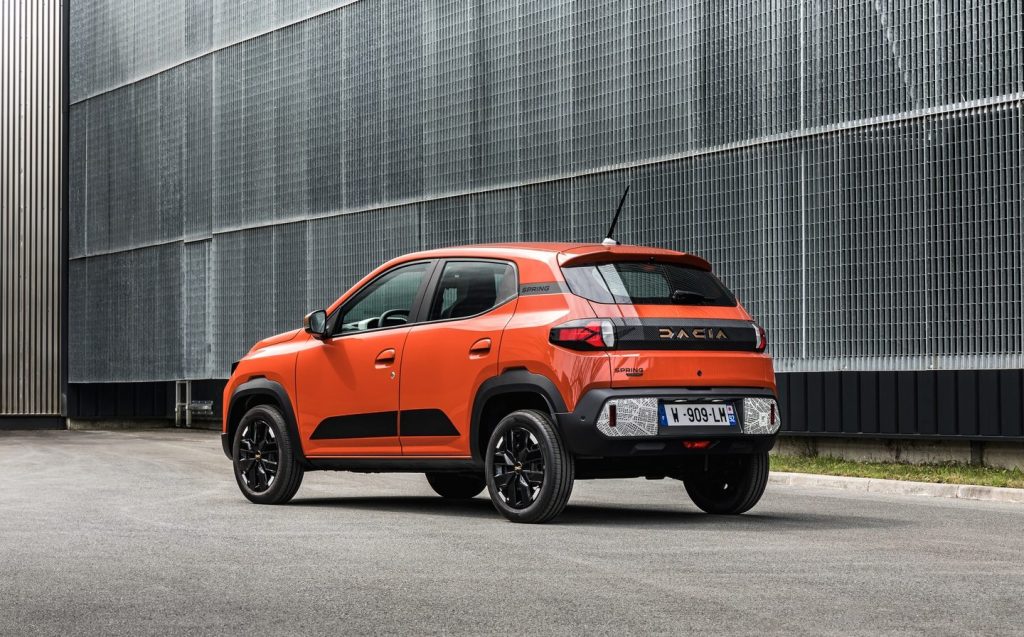
Step forward no-nonsense Dacia with some very simple maths: you want a cheap electric car? Here’s one for £14,995. Now we’re paying attention.
Admittedly, that doesn’t get you a lot of electric car — just 44bhp and 140 miles of range (less in the real world, especially in cold weather) — but it’s similar to the old Mini Electric and Honda e, which are twice the price. And up to 140 miles might just be enough for some.
On sale in some parts of Europe since 2021, and finding 150,000 homes in that time, the Spring has until now only been available with that weedy 44bhp motor — 19.1 seconds to 62mph sounds like something out of a 1960s edition of The Autocar — but for this second-generation model there’s the option of a far more useful and useable 64bhp motor, which will get you to 62mph from rest in a not-so-dizzying 13.7 seconds.
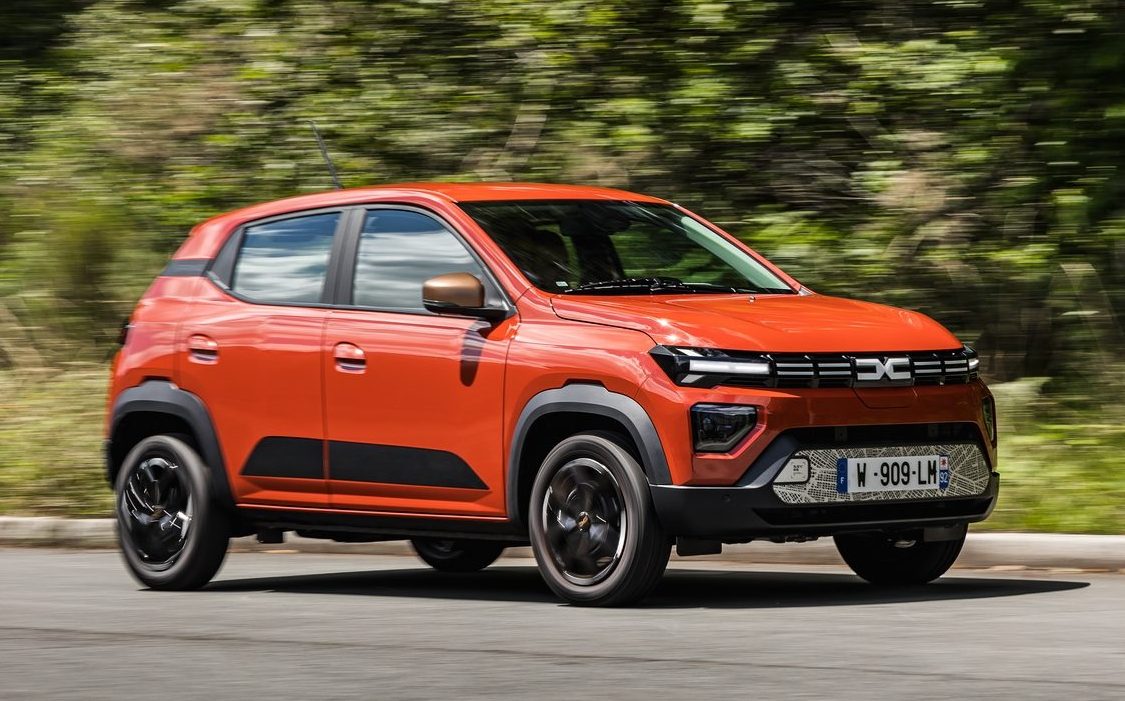
Picking the more powerful motor doesn’t dent the range, oddly (the less powerful motor has inferior energy efficiency because it can’t regenerate as much energy under braking), but it is a little more expensive, of course — £16,995 instead of the most basic version’s £14,995. Hardly outrageous.
Mind you, those prices may take a hit if the UK decides to follow the EU’s lead in levying tariffs on Chinese-made electric cars — those concerned about the rise of China will want to note that Dacia builds the Spring there to save on costs.
Nesteed under the back seat is the the battery, which has a capacity of just 26.8kWh — smaller by far than the one in a Range Rover plug-in hybrid. It is designed to be slow-charged most of the time, and as standard the most basic Spring only comes with 7kW charging capability (you have to pay extra to be able to fast-charge when out and about). That’s only just over twice as fast as a standard three-pin wall socket.
That’s because Dacia has kept a close eye on existing Spring owners and found that on an average day they cover a mere 22.9 miles, at a matching 22.9mph, and do pretty well all of their charging at home. You don’t even need to go to the expense of a home charging wall box if you don’t fancy it, either, as plugged into a regular three-pin socket, the Spring will charge up from flat in 11 hours — good enough to get most people full top-up overnight.
If you are happy with that kind of arrangement, do please pay a qualified electrician to check the socket is suitable, as some aren’t designed to take a maximum load over such a long timeframe and electrical fires are far from friendly on the wallet.
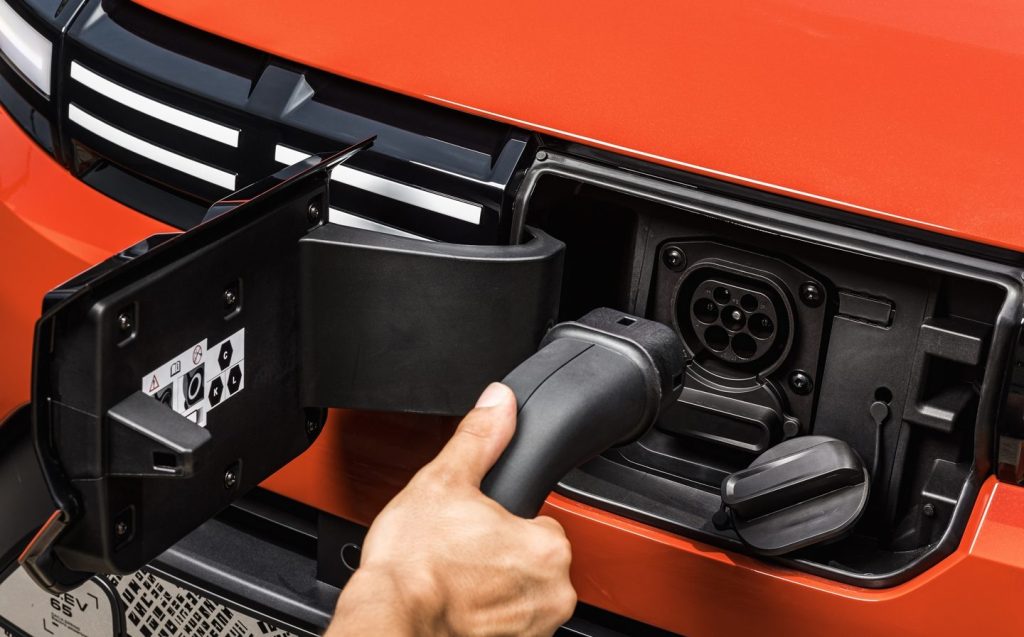
Whatever onboard charger you get, this second-generation Dacia Spring looks a good deal more appealing than the slightly gawky original model available across the Channel. New styling has made it look both smoother and chunkier, and there are some really neat design details that not only look good, but also save both money and wear and tear.
The lower front bumper and front wheel arch lips, for example, are made of one piece of plastic, dyed in the mould so that it doesn’t need painting, and won’t show scratches so easily. In the centre of that bumper there’s a space for a decal (which had a funky city street motif on our test car) which can be replaced at your whim to freshen up the Spring’s appearance.
The slim headlights and Dacia grille look sleek, or at least as sleek as a small, upright city car can, and the single windscreen wiper, with its pantograph hinged arm so that it can get to the edges of the screen, is rather cool (even if it leaves a hefty portion of the passenger’s side un-wiped). There’s also only a single windscreen washer jet, which saves a few more pennies.
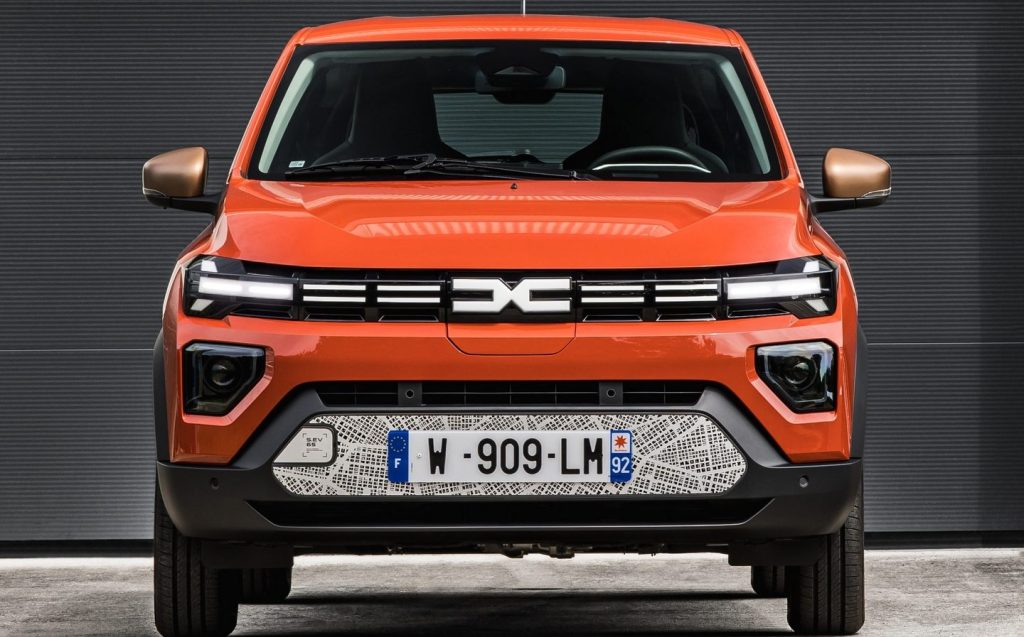
With all this scrimping and saving, the interior could have been dreadful. The original Dacia Sandero had plastic edges so sharp you could literally cut yourself looking for the bonnet release catch, but the Spring’s cabin is rather good. Yes, of course, the plastics are cheap but they don’t feel excessively so, and as with the recently-renewed Duster crossover, they’re shaped to appear blocky, rugged and chunky, as if Fisher Price started supplying Millets.
There’s a standard 7in digital instrument panel, which works fine if without any particular visual flair, and down low there’s a big toggle switch with which you select forward or reverse. The slightly squared-off steering wheel only adjusts for height but feels better to hold than can be expected, and the detailing on the air vents — mirroring the Y-shaped graphics of the headlights — and the simple open shelf in place of a glovebox look good and work simply.
There are proper physical controls for the air conditioning and sufficient storage in the cabin to swallow around 30 litres of whatever you’re carrying.

Dacia has given the Spring its “You-Clip” system, too, which means you can buy a range of snap-on accessories, including a lidded rubbish bin, cup holders and phone holders. Pricier versions of the Spring get a 10in touchscreen, which is nice and all but not really necessary given that you can just connect your phone to the car using Dacia’s own app. One reason you might want to opt for it, though, is for the reversing camera, which is helpful given that over-the-shoulder visibility isn’t great.
Space is also an issue. I’m tall and quite broad, and although I wouldn’t go so far as to call the Spring’s cabin uncomfortable, I was rammed up firmly against the door pillar. A strike from that angle didn’t bear thinking about as my elbow would have acted as the side impact bar. Dacia generally sidesteps comments or questions about its safety performance, and most of its cars have performed relatively poorly in Euro NCAP crash tests.

Still, I could squeeze in happily enough, which is more than could be said for anyone trying to do the same behind me. If anyone wants to fit four people in the Spring, the driver and front passenger probably need to be Danny DeVito and Kevin Hart. Four people is also the limit, as there’s no third rear seatbelt in the centre.
At least the boot is a good size — 305 litres expanding to 1,004 litres with a folded back seat, albeit there’s no split-fold as the seatback just leans forward in one go — and there’s an optional accessory which creates a 35-litre storage tray under the bonnet, which is handy for holding charging cables.
Dacia says that it has improved the Spring’s handling by tweaking the steering and adding wheels of — wait for it — 15in diameter, up one inch from the standard wheels. They’re narrow, too. We didn’t realise that anyone sold wheels this small anymore, and looked at from behind the tyres appear to have come from a moped. That means they’ll be cheap to replace but I also didn’t expect on-the-limit grip to impress.
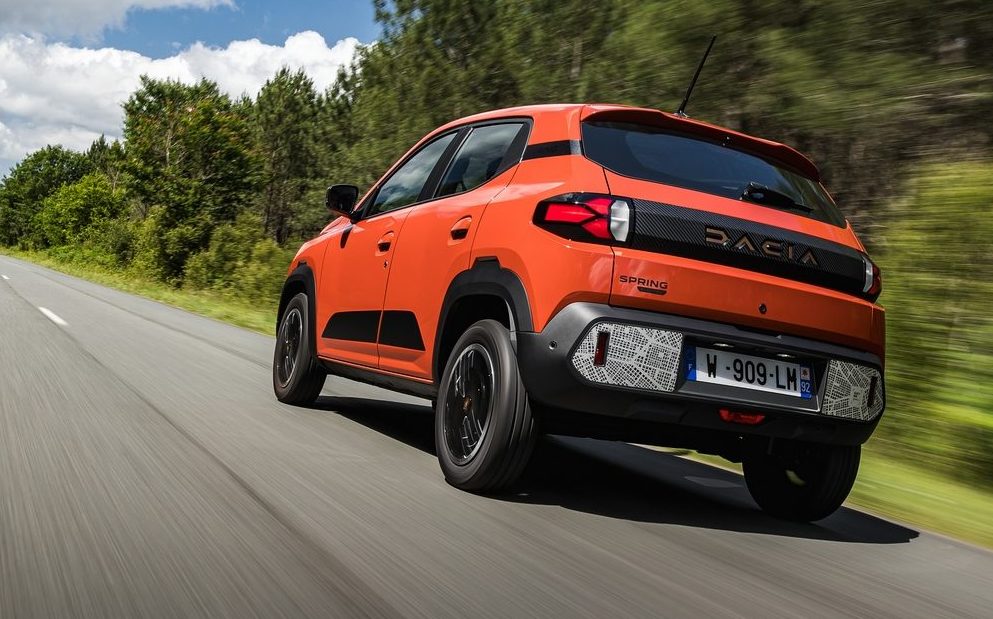
So, it proved. Enter a roundabout or a series of sweeping corners with any enthusiasm and the Spring heels over on its soft springs, and those titchy tyres immediately head for the edge of howling in protest. The steering is under-geared and very light, and entirely without feel and accuracy, so corners are taken on the basis of trust more than anything else.
Which sounds bad, but the Spring is really rather enjoyable to drive, in a slightly odd way. Dacia boxed clever by bringing us to Bordeaux to test the Spring, where the rural roads all have 80km/h (50mph) limits, a speed at which even the Spring’s lowly dynamic limits are unlikely to be tested. However, away from the gaze of any local Les Flics, we did find some corners and enough room to build up a head of speed…
Which the Spring gathers better than expected. Mash the pedal on the exit of a corner or roundabout and that 50mph comes up fairly briskly. It’s the run to 62mph and beyond that really takes time, and the Spring is all out of puff at 78mph.
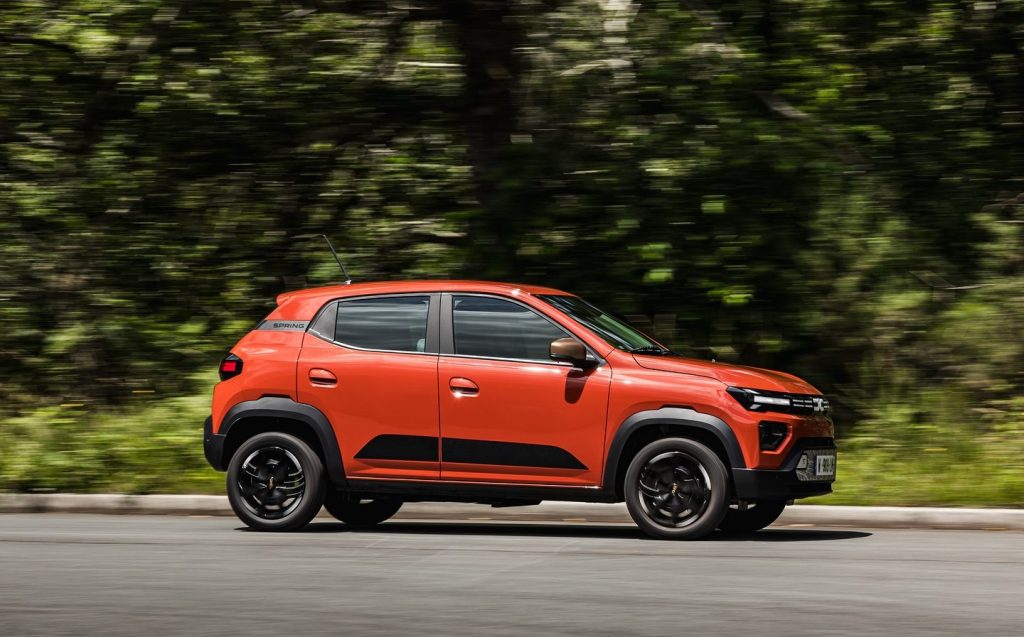
And while way it corners is objectively poor, I couldn’t help grinning all the time while driving the Spring like I’d stolen it. Most modern cars are dull tools for driving — you point, they go, and without fuss. The Spring, by contrast, has to be coaxed and encouraged to keep up a decent pace across country (rather like driving a modern-day electric Citroen 2CV) so the driver feels engaged and part of the action rather than mere observer. Like that simple key that starts it, the Spring helps one revel in the simple pleasures.
The ride quality, on those small wheels, is pretty good thanks to a set of soft springs, but the downside to that is a tendency to dip the nose all the way down to the bump-stops when tackling tall speed ramps. That aside, urban roads are clearly the Spring’s happy place. If there’s a handy sixpence around, the Spring will turn on it, and it’s both narrow and short enough that parking spaces not open to others will be suitable for the Dacia.
In that sense, the Spring is a true minimalist car, and joyfully so. It is no bigger nor heavier (just under one tonne at the kerb, without a driver, making it a featherweight in electric terms) than it absolutely needs to be, nor any roomier nor safer (although Dacia has upped the levels of electronic driver assistance to keep pace with legislation). It’s just about powerful enough to keep up with other traffic and has just — really only just — enough range to make it useable.
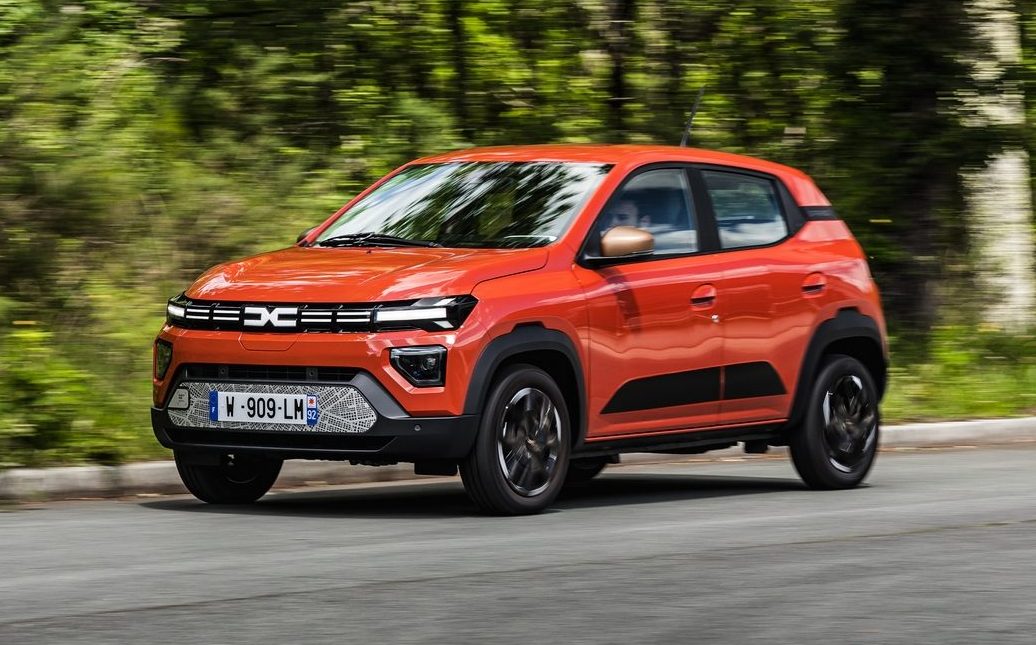
That 140-mile range seems realistic. We managed to eke out 5.2 miles per kWh, compared to Dacia’s official number of 4.6 miles per kWh. A long run up a wet and cold motorway would produce something far less edifying, and probably push the useable range down below 100 miles.
Long hauls are not the Spring’s point, however. It is designed, purely and simply, to be as little an amount of electric car as you can get away with. In that mission, it has succeeded superbly. There is perhaps a chance, a small chance, that like its simple and prosaic ignition key the affordable Spring could itself be the key to unlocking broader electric car acceptance.
Related articles
- If you found our review of the new Dacia Spring interesting, you might want to read our review of the new Dacia Duster as well
- Thinking of getting behind the wheel of a new vehicle this year, as a private or company car driver? Check out 11 of the most exciting new models arriving in 2024
- Did you hear Dacia plans to compete at the 2025 Dakar Rally?
Latest articles
- F1 2025 calendar and race reports: The new Formula One season as it happens
- Seven great automotive events to visit this summer, from F1 to art and champagne
- Watch new Porsche 911 GT3 smash Nürburgring record for manual cars
- Skoda Elroq 2025 review: Czech carmaker can’t seem to miss with its electric family cars
- Five best electric cars to buy in 2025
- Should I buy a diesel car in 2025?
- Zeekr 7X AWD 2025 review: A fast, spacious and high tech premium SUV — but someone call the chassis chief
- Denza Z9GT 2025 review: Flawed but sleek 1,062bhp shooting brake from BYD’s luxury arm
- Extended test: 2024 Renault Scenic E-Tech review


